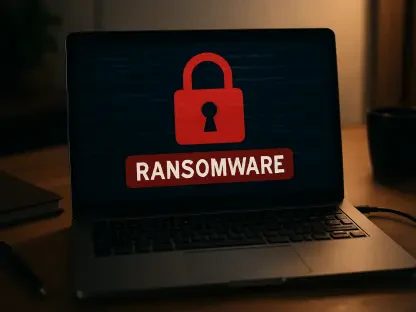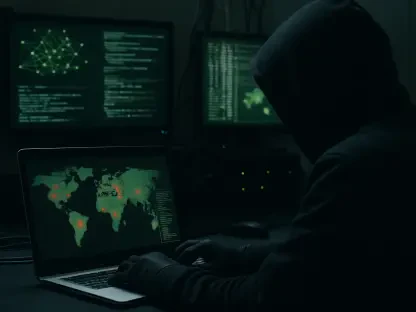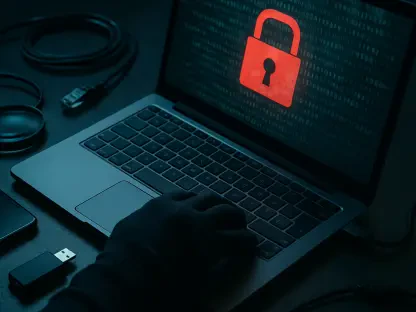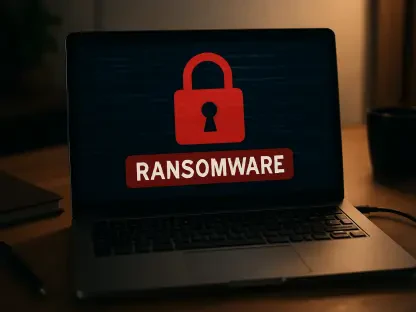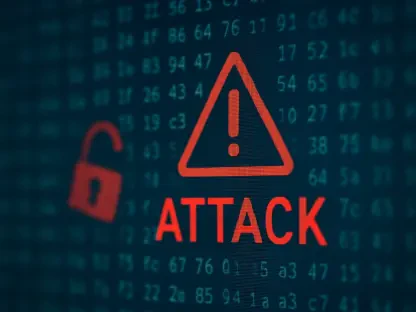The energy sector is increasingly recognizing the critical importance of cybersecurity in the face of evolving cyber threats and geopolitical tensions. As the industry undergoes a significant transition towards digital technologies and sustainability, the need to protect operational technology (OT) and information technology (IT) assets has never been more urgent. This article delves into the heightened focus on cybersecurity within the energy sector, the challenges faced, and the strategies being employed to safeguard against cyber threats.
Elevated Priority on Cybersecurity
Leadership Acknowledgment and Investment
Energy companies are placing a higher priority on cybersecurity, with two-thirds of energy professionals (65%) asserting that their leadership views it as the greatest risk currently faced by their business. This recognition at the highest levels translates into tangible actions, as more than two-thirds (71%) of energy professionals expect increased investments in cybersecurity within their companies this year. The consensus on ramping up defenses against cyber threats underscores the critical importance of protecting both OT and IT assets.
The Energy Cyber Priority report from DNV Cyber reveals notable progress in the cybersecurity strategies employed by energy companies. Increased awareness at the leadership level is evident, with 78% of energy professionals expressing confidence that their leaders have a sufficient understanding of cyber risks. This progress is complemented by effective employee training initiatives, as over 84% of employees involved in the survey indicate that they know exactly what steps to take when faced with potential cyber threats.
Progress in Cybersecurity Strategies
Despite advancements, the energy sector grapples with challenges stemming from the evolving nature of cyber threats. The energy transition, characterized by the deployment of digital technologies to drive sustainability, expands the potential attack surfaces, thereby increasing vulnerability. The transition’s growing reliance on sensitive data, third-party tools, and interconnected environments presents hackers with new opportunities to infiltrate systems. The article reveals that energy professionals are indeed placing increased importance on their cybersecurity measures, reflecting the complex landscape they must navigate.
Geopolitical tensions have further magnified concerns over cybersecurity. Three-quarters (75%) of surveyed energy professionals report heightened focus on cybersecurity due to increasing geopolitical tensions over the past year. Significant threats within the workforce have been highlighted, with more energy professionals worried about cyber-criminal gangs and potential attacks directed by foreign powers. Concern over malicious insiders has also grown, pointing to an urgent need for the energy industry to sustain resilience against a broader array of sophisticated threats.
Challenges in the Evolving Cyber Threat Landscape
Expanding Attack Surfaces
Despite advancements, the energy sector grapples with challenges stemming from the evolving nature of cyber threats. The energy transition, characterized by the deployment of digital technologies to drive sustainability, expands the potential attack surfaces, thereby increasing vulnerability. The transition’s growing reliance on sensitive data, third-party tools, and interconnected environments presents hackers with new opportunities to infiltrate systems. Hence, the industry must continuously adapt and innovate to ward off increasingly sophisticated cyber threats.
The complexity is exacerbated by the integral role of interconnected environments and sensitive data in modern energy operations. These elements are vital for efficient functioning but also present multiple entry points for cybercriminals. These expanding attack surfaces require robust, layered security measures that can effectively monitor and protect every possible area of vulnerability. The energy sector’s digital transformation makes it imperative for cybersecurity strategies to evolve in tandem, ensuring comprehensive protection against current and emerging threats.
Geopolitical Tensions and Cybersecurity Concerns
Geopolitical tensions have further magnified concerns over cybersecurity. Three-quarters (75%) of surveyed energy professionals report heightened focus on cybersecurity due to increasing geopolitical tensions over the past year. Significant threats within the workforce have been highlighted, with more energy professionals worried about cyber-criminal gangs and potential attacks directed by foreign powers. Concern over malicious insiders has also grown, pointing to an urgent need for the energy industry to sustain resilience against a broader array of sophisticated threats.
The escalating geopolitical tensions have underscored the critical importance of a robust cybersecurity framework. Energy professionals indicate rising worries over cyber-criminal gangs—concern levels surged from 50% in 2023 to 79%—and potential attacks orchestrated by foreign powers jumped from 62% in 2023 to 72%. Additionally, concern over malicious insiders increased from 51% in 2023 to 62%. These figures reflect an urgent need for comprehensive security measures that can address a wide range of threats, including those originating from both within and outside the organization.
Key Areas of Focus for Cybersecurity Efforts
Securing Physical Infrastructure
Securing physical infrastructure is paramount, particularly as OT systems are increasingly vulnerable to sophisticated attacks that could lead to significant safety incidents. The article reveals that 71% of energy professionals consider their organizations more vulnerable to OT cyber events than ever before. Furthermore, over half (57%) acknowledge that their OT defenses lag behind their IT defenses, representing a significant gap that needs to be addressed.
The critical nature of OT systems in managing and automating physical infrastructure in the energy sector necessitates heightened security measures. Attackers targeting OT systems can cause severe disruptions, potentially compromising safety and operational continuity. To combat these threats, energy companies must invest in robust OT-specific cybersecurity protocols and ensure that their OT and IT defenses are aligned, creating a cohesive and comprehensive security strategy capable of mitigating risks across the board.
Tackling Supply Chain Cybersecurity Issues
Supply chains present substantial concerns for energy companies, as threat actors aim to exploit suppliers and sub-suppliers to breach large asset operators. Cybersecurity issues are typically integrated into procurement processes by around half (53%) of the energy professionals. However, only a meager 16% express strong confidence in demonstrating full visibility of their supply chains and associated vulnerabilities. More than a third (34%) suspect undisclosed breaches among their suppliers, highlighting an area that requires rigorous oversight and improvement.
The interconnected nature of supply chains in the energy sector renders them an attractive target for cyber adversaries. A successful attack on a single supplier can have cascading effects, compromising the security of primary operators. To mitigate these risks, energy companies must bolster their supply chain cybersecurity measures, integrating comprehensive oversight mechanisms and ensuring transparent communication with all stakeholders. This approach can help identify potential vulnerabilities and address them proactively, reducing the likelihood of successful breaches and maintaining the integrity of the entire supply chain.
Enhancing Employee Vigilance and Skills
Employee Training and Awareness
Employee vigilance remains critical, though the tactics deployed by cyber adversaries are becoming increasingly sophisticated. While the steady rise in awareness and training is noted, three-quarters (76%) of energy professionals express concern that current training levels are insufficient for more advanced attacks. Gaps in skills and knowledge further exacerbate this issue, with 46% of respondents indicating that a lack of talent hampers their organizations’ security initiatives.
To strengthen the organization’s overall cybersecurity posture, continuous and advanced training programs are necessary. These programs should focus on equipping employees with the skills and knowledge required to identify and respond to sophisticated cyber threats effectively. Emphasizing ongoing education and practical exercises can help bridge existing knowledge gaps and enhance the workforce’s ability to defend against complex attacks. By fostering a culture of cybersecurity awareness and vigilance, organizations can better protect themselves from potential breaches.
Embracing Artificial Intelligence (AI)
AI’s growing role in cybercriminal activities, particularly in executing more convincing phishing attacks, underscores the need for energy companies to keep pace with technological advancements. Two-thirds (66%) of energy professionals agree that AI has complicated the ability to discern genuine emails from fraudulent ones. Nearly half (47%) fear that their organizations will fall behind adversaries unless they actively harness AI’s potential.
Harnessing AI’s potential can be a double-edged sword for energy companies. While cybercriminals leverage AI to enhance their attack strategies, organizations can also deploy AI-driven solutions to bolster their cybersecurity defenses. By implementing AI-based threat detection systems and automated response mechanisms, companies can significantly enhance their ability to identify and mitigate cyber threats in real-time. Additionally, integrating AI into employee training programs can provide more dynamic and responsive learning experiences, further strengthening the organization’s overall cybersecurity capabilities.
Strategic Recommendations for Strengthening Cybersecurity
Prioritizing OT Systems and Supply Chain Security
To fortify their cybersecurity defenses, energy companies should prioritize efforts to secure OT systems and ensure greater transparency and security within the supply chain. Addressing the significant gap between OT and IT defenses is crucial, as is implementing rigorous oversight and improvement measures for supply chain security.
A holistic approach to cybersecurity should encompass both OT and IT systems, ensuring that all aspects of the organization’s infrastructure are protected against potential threats. Energy companies must invest in advanced OT-specific security solutions and develop comprehensive policies that integrate cybersecurity considerations into every stage of the supply chain. This strategy can help mitigate risks and ensure the resilience of critical infrastructure, safeguarding against disruptions caused by cyber incidents.
Redesigning Cyber’s Relationship with Business Operations
A strategic reset and redesign of cyber’s relationship with business operations are recommended. This involves integrating cybersecurity considerations into all aspects of business operations and decision-making processes, ensuring that cybersecurity is not an afterthought but a fundamental component of the organization’s strategy.
To effectively embed cybersecurity into business operations, organizations must foster a culture of security awareness and prioritize collaboration between cybersecurity teams and other departments. By aligning cybersecurity objectives with business goals, companies can create a more cohesive and proactive approach to managing cyber risks. This integration can lead to more resilient operations and a robust defense against the evolving threat landscape.
Innovative Approaches to Training and AI Proficiency
The energy sector increasingly acknowledges the vital importance of cybersecurity amidst evolving cyber threats and geopolitical tensions. As the industry undergoes a significant shift towards digital technologies and sustainability, the urgency to protect both operational technology (OT) and information technology (IT) assets has never been greater.
This industry-wide transformation is driven by the integration of smart grids, renewable energy sources, and advanced metering infrastructure. These advancements bring many benefits but also come with increased vulnerability to cyber-attacks. Protecting critical infrastructure from such threats is paramount.
This article explores the heightened emphasis on cybersecurity within the energy sector, the myriad challenges encountered, and the proactive strategies being implemented to defend against cyber threats. It underscores the necessity for a robust cybersecurity framework to ensure the reliability and security of energy systems. Collaboration among industry stakeholders, governments, and cybersecurity experts is crucial in developing and maintaining these protective measures, ensuring a resilient and secure energy landscape for the future.



